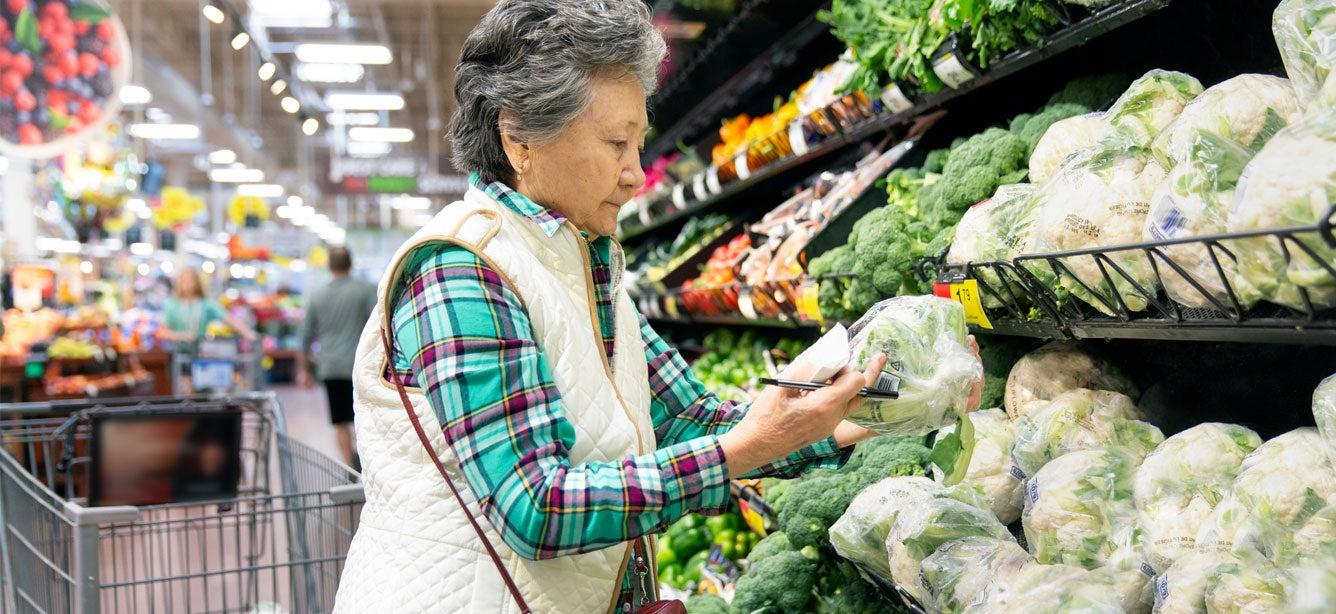
Related Topics
If you’re enrolled in the Supplemental Nutrition Assistance Program (SNAP, or sometimes called the Food Stamp Program), you likely experienced unexpected hardship in November 2025.
That's because regular federal funding for the program lapsed beginning on November 1. This lapse happened during a historic, 43-day government shutdown during which members of Congress failed to agree or vote on a “continuing resolution” (CR) that would have bridged critical budget gaps in the meantime.
For nearly two weeks, tens of millions of people who rely on SNAP lived with the stress and uncertainty of lost benefits with no guarantee they would resume,” said Ryan Ramsey, NCOA’s Associate Director of Health Coverage and Benefits. “While some states immediately stepped in to provide emergency funding, people still experienced delayed or reduced payments. It goes without saying: no one should have to worry like that about where their next meal is going to come from.”
Fortunately, with the shutdown now ended, SNAP payments have resumed. But the ripple effects for millions of older adults are significant.
How were SNAP benefits affected by the 2025 federal government shutdown?
The United States Department of Agriculture temporarily froze SNAP funding beginning on November 1, 2025. As a result, 42 million low-income people and families learned they wouldn’t be receiving their full monthly benefits. On average, that benefit adds up to about $188 for households with adults age 60 and over.1
Following a series of legal challenges and often confusing public messages, the federal government subsequently approved “partial” benefits for November. What this looked like for SNAP enrollees varied widely depending on where they lived. Some people received payment within days while others lived without. In the meantime, Ramsey said, “people absolutely went hungry.”
“Never mind that $94—the average 50% benefit—is completely inadequate for buying the food you need,” he said.
A stopgap spending package ended the shutdown on November 12 and restored USDA funding for SNAP. This means that participants will receive their full benefits at least through January 2026.
Still, upcoming and approved changes to the SNAP program—coupled with skyrocketing food prices—can leave you feeling even more worried about how to pay for groceries. These practical tips can empower you to stretch the SNAP dollars you do have.
How can I stretch my SNAP benefits further?
With all the uncertainty around SNAP benefits these days, you might be wondering, “How can I make my money go further at the grocery store? How can I keep buying the foods I need to stay healthy?”
We’ve put together five budget-boosting tips below:
- Buy store brands: Opting for cheaper, store-brand versions of your favorite products can help you save major money over time. And the best part? Store brands often rival brand-name products in terms of quality (sometimes, they’re even better).
- Shop the sales: Check your store’s weekly flyer to find money-saving deals. Most sales promotions start in the middle of the week, so that’s a great time to stock up on what you need. When in the supermarket, check the store entrance and the ends of store aisles for great buys. If you can, build your weekly menu around what’s on sale.
- Plan your meals ahead of time: With meal planning, you can avoid impulse buys as well as extra trips to the supermarket. It also helps you streamline your grocery list and stick to the essentials.
- Clip all the coupons you can find: Clipping coupons might seem like a thing of the past, but it's still a great way to stretch your SNAP dollars further. These days, you can find money-saving coupons in the newspaper, online, and in weekly store flyers.
- Take advantage of store loyalty programs: Many grocery and big-box stores have reward programs that give you access to exclusive product savings and discounts. These are usually free to join and they're a good option if you shop the same stores regularly.
Not already enrolled in SNAP? NCOA can help.
Get help applying for SNAP
SNAP is a lifeline for many older adults who would otherwise have trouble affording the food they need. Take Mr. KC, for example. At age 64, Mr. KC had recently transitioned from a nursing facility. This meant he no longer had meals regularly provided to him, and he needed to figure out how to apply for food benefits. On top of this, Mr. KC was legally blind and knew he’d have difficulty reading any applications he had to fill out.
With help from one of NCOA’s Benefits Enrollment Centers (BECs), Mr. KC was approved for SNAP benefits worth $280 per month.
I’m very grateful for the support I received from Elder Law of Michigan,” he told us. “Now I can purchase the groceries I need.”
NCOA makes it easy to learn more and even find help to apply for SNAP assistance. To get started, go to BenefitsCheckUp.org, enter your ZIP code, and select Food and Nutrition programs. Answer a few short questions to determine your eligibility for SNAP and other types of benefits. If you qualify, we’ll also give you all the information you need to apply, whether you want to do it yourself or find someone to help you.
Sources
1. Mia Monkovic et al. Characteristics of Supplemental Nutrition Assistance Program Households: Fiscal Year 2023. United States Department of Agriculture. April 2025. Found on the internet at https://fns-prod.azureedge.us/sites/default/files/resource-files/snap-FY23-Characteristics-Report.pdf



